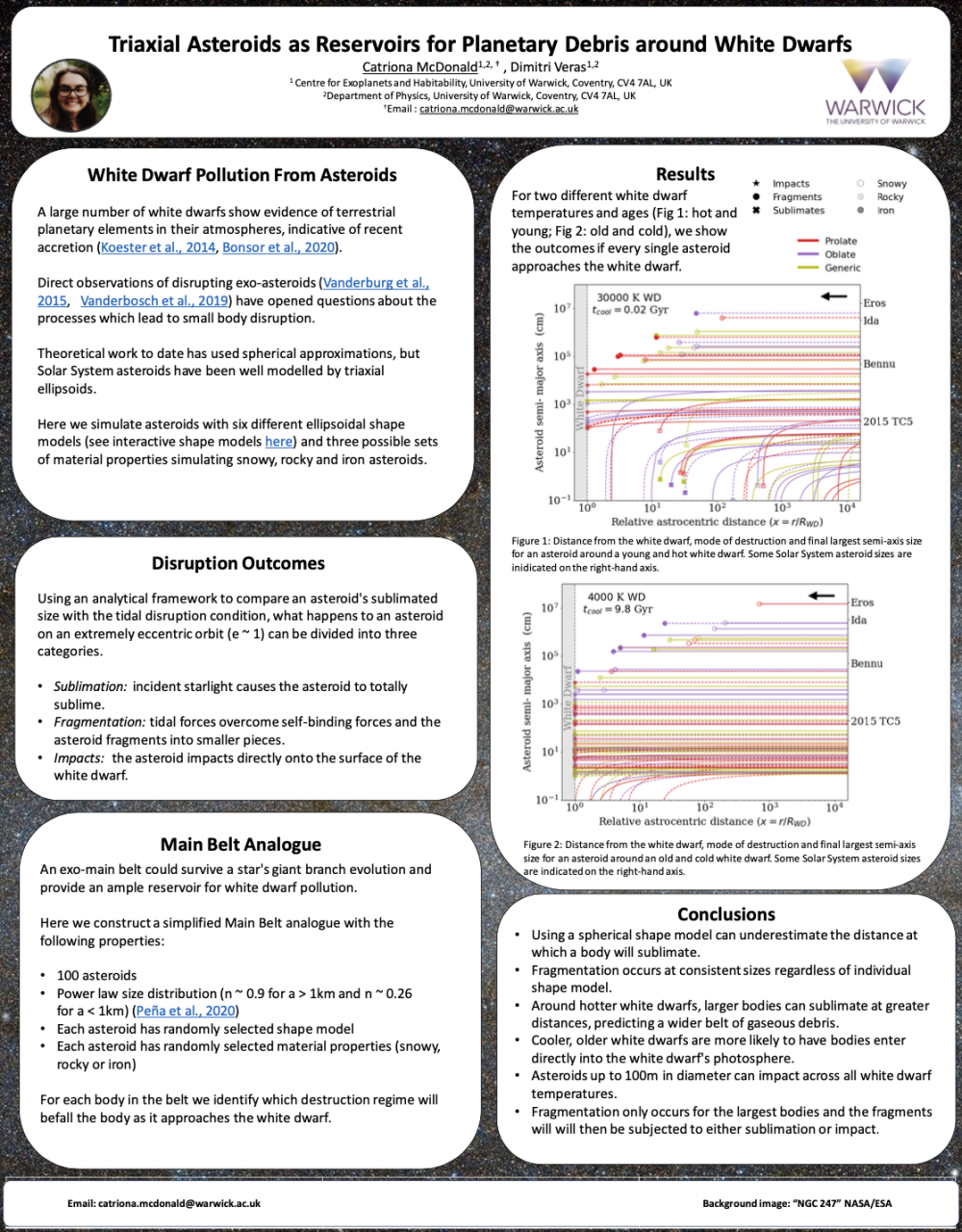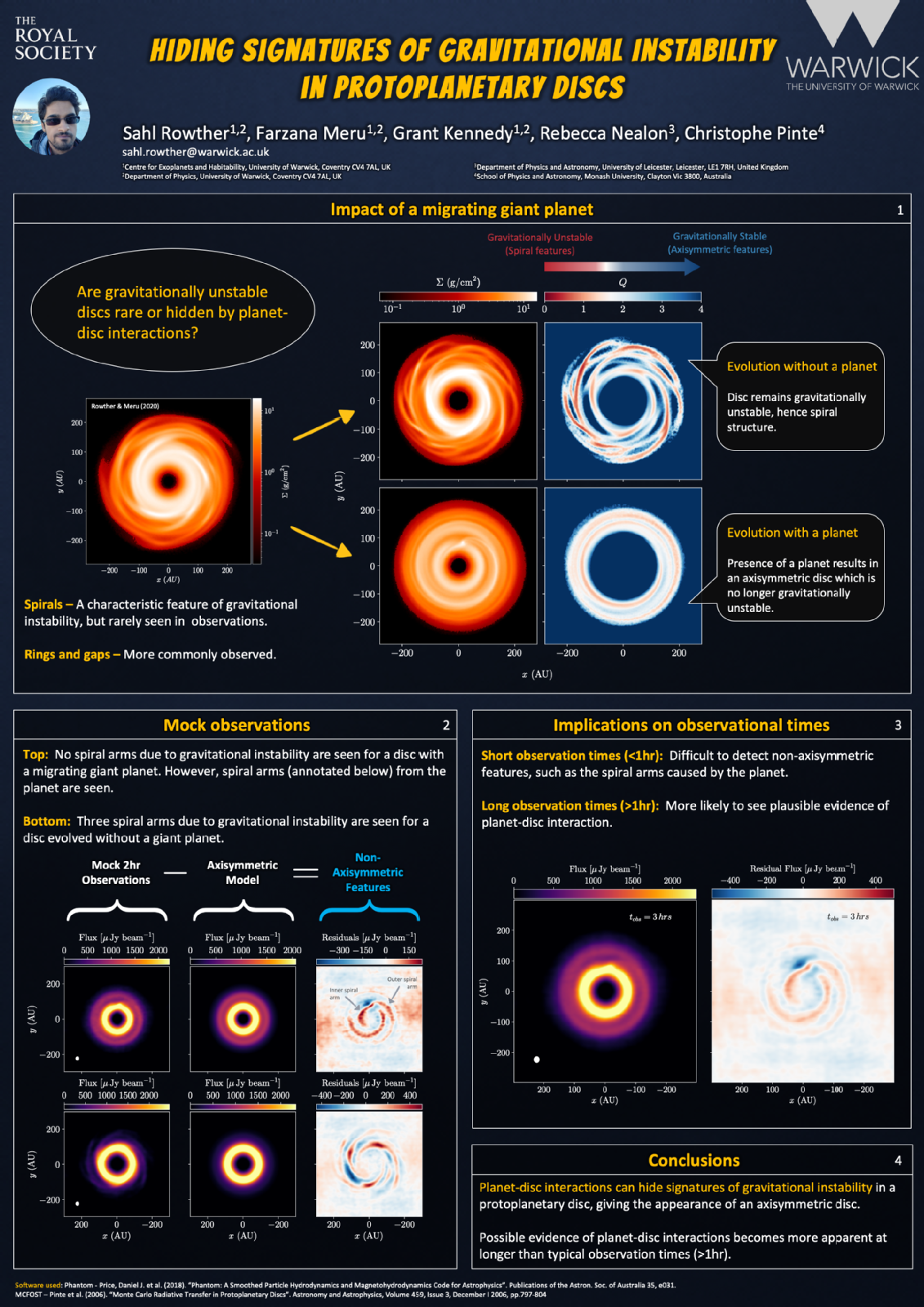Research News & Highlights
Five Years After HL Tau
Sahl Rowther -- Are Gravitationally Unstable Protoplanetary Discs Rare?
The work covered in this talk is described in Rowther et al. 2020.
Rebecca Nealon -- Spirals, Shadows and Precession in HD 100453 Part 2
Part 1 can be viewed here.
Dimitri Veras - Constraining Planet Formation Around 6-8 Solar Mass Stars
The work covered in this talk is described in Veras et al. 2020.
Hiding Signatures of Gravitational Instability in Protoplanetary Discs with Planets
Sahl Rowther, Farzana Meru, Grant M. Kennedy, Rebecca Nealon, Christophe Pinte
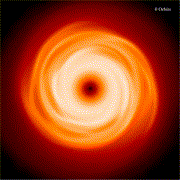
We carry out three-dimensional smoothed particle hydrodynamics simulations to show that a migrating giant planet strongly suppresses the spiral structure in self-gravitating disks. We present mock Atacama Large Millimeter/submillimeter Array (ALMA) continuum observations that show that in the absence of a planet, spiral arms due to gravitational instability are easily observed. Whereas in the presence of a giant planet, the spiral structures are suppressed by the migrating planet resulting in a largely axisymmetric disk with a ring and gap structure. Our modeling of the gas kinematics shows that the planet's presence could be inferred, for example, using optically thin 13C16O. Our results show that it is not necessary to limit the gas mass of disks by assuming high dust-to-gas mass ratios in order to explain a lack of spiral features that would otherwise be expected in high-mass disks.
Exoplanet Demographics
Christopher Manser -- Doppler Imaging of a Second Planetary Debris Disc Around a White Dwarf
Talk begins at 4:16:02.
Dimitri Veras -- Full-lifetime Simulations of Planetary Systems
Talk begins at 2:00:00.
Catriona McDonald -- Triaxial Asteroids as Reservoirs for Planetary Debris around White Dwarfs
Here, we present an analytical framework incorporating tidal, self-gravitational and internal strength forces to triaxial ellipsoids approaching a white dwarf on extremely eccentric (e ~ 1) orbits. Such extreme orbits could be produced by dynamic interactions with planets in the white dwarf system. The subsequent disruption of the asteroids is split into three distinct regimes: tidal fragmentation, sublimation, and direct impact. This framework is extended to cover a simplified Main Belt analogue of 100 planetesimals with an observational size distribution and randomly chosen shape model and material, for a range of white dwarf temperatures. We find that using a spherical shape model consistently underestimates where sublimation occurs and overestimates fragmentation distance. The small spatial scales of white dwarf planetary systems can cause these discrepancies to have a large effect on predicted debris distributions. Our results allow us to place constraints on the expected planetary debris from asteroids at different white dwarf cooling ages and motivates future studies to include more accurate shape models
Spirals, shadows and precession in HD 100453 - II. The hidden companion
Rebecca Nealon, Nicolás Cuello, Jean-François Gonzalez, Gerrit van der Plas, Christophe Pinte, Richard Alexander, François Ménard, Daniel Price
 The protoplanetary disc HD 100453 exhibits a curious combination of spirals, shadows, and a relative misalignment between the observed outer disc and inferred inner disc. This disc is accompanied by a secondary star on a bound orbit exterior to the disc. In our companion paper, the orbit of the secondary was shown to be misaligned by 61° to the plane of the outer disc. Here, we investigate the properties of the inner companion and the origin of the misalignment between the inner and outer discs. In our proposed model, the misalignment observed between the outer and inner disc arises naturally as a result of the misaligned outer companion driving the outer disc to precess more rapidly than the inner disc.
The protoplanetary disc HD 100453 exhibits a curious combination of spirals, shadows, and a relative misalignment between the observed outer disc and inferred inner disc. This disc is accompanied by a secondary star on a bound orbit exterior to the disc. In our companion paper, the orbit of the secondary was shown to be misaligned by 61° to the plane of the outer disc. Here, we investigate the properties of the inner companion and the origin of the misalignment between the inner and outer discs. In our proposed model, the misalignment observed between the outer and inner disc arises naturally as a result of the misaligned outer companion driving the outer disc to precess more rapidly than the inner disc.
Exoplanets III
Sahl Rowther -- Hiding Signatures of Gravitational Instability in Protoplanetary Discs
We carry out three-dimensional smoothed particle hydrodynamics simulations to show that a migrating giant planet strongly suppresses the spiral structure in self-gravitating disks. We present mock Atacama Large Millimeter/submillimeter Array (ALMA) continuum observations that show that in the absence of a planet, spiral arms due to gravitational instability are easily observed. Whereas in the presence of a giant planet, the spiral structures are suppressed by the migrating planet resulting in a largely axisymmetric disk with a ring and gap structure. Our modeling of the gas kinematics shows that the planet's presence could be inferred, for example, using optically thin 13C16O. Our results show that it is not necessary to limit the gas mass of disks by assuming high dust-to-gas mass ratios in order to explain a lack of spiral features that would otherwise be expected in high-mass disks.
Planet Migration in Self-Gravitating Discs: Survival of Planets
Sahl Rowther, Farzana Meru
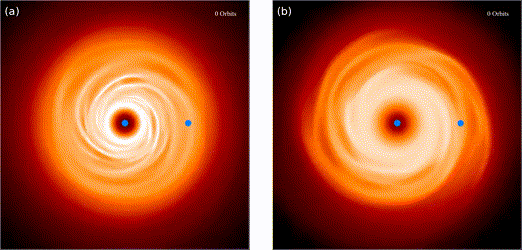
We carry out three-dimensional SPH simulations to study whether planets can survive in self-gravitating protoplanetary discs. The discs modelled here use a cooling prescription that mimics a real disc which is only gravitationally unstable in the outer regions. We do this by modelling the cooling using a simplified method such that the cooling time in the outer parts of the disc is shorter than in the inner regions, as expected in real discs. We find that both giant (> M_Sat) and low mass (< M_Nep) planets initially migrate inwards very rapidly, but are able to slow down in the inner gravitationally stable regions of the disc without needing to open up a gap. This is in contrast to previous studies where the cooling was modelled in a more simplified manner where regardless of mass, the planets were unable to slow down their inward migration. This shows the important effect the thermodynamics has on planet migration. In a broader context, these results show that planets that form in the early stages of the discs' evolution, when they are still quite massive and self-gravitating, can survive.
The liftetimes of planetary debris discs around white dwarfs
Dimitri Veras and Kevin Heng
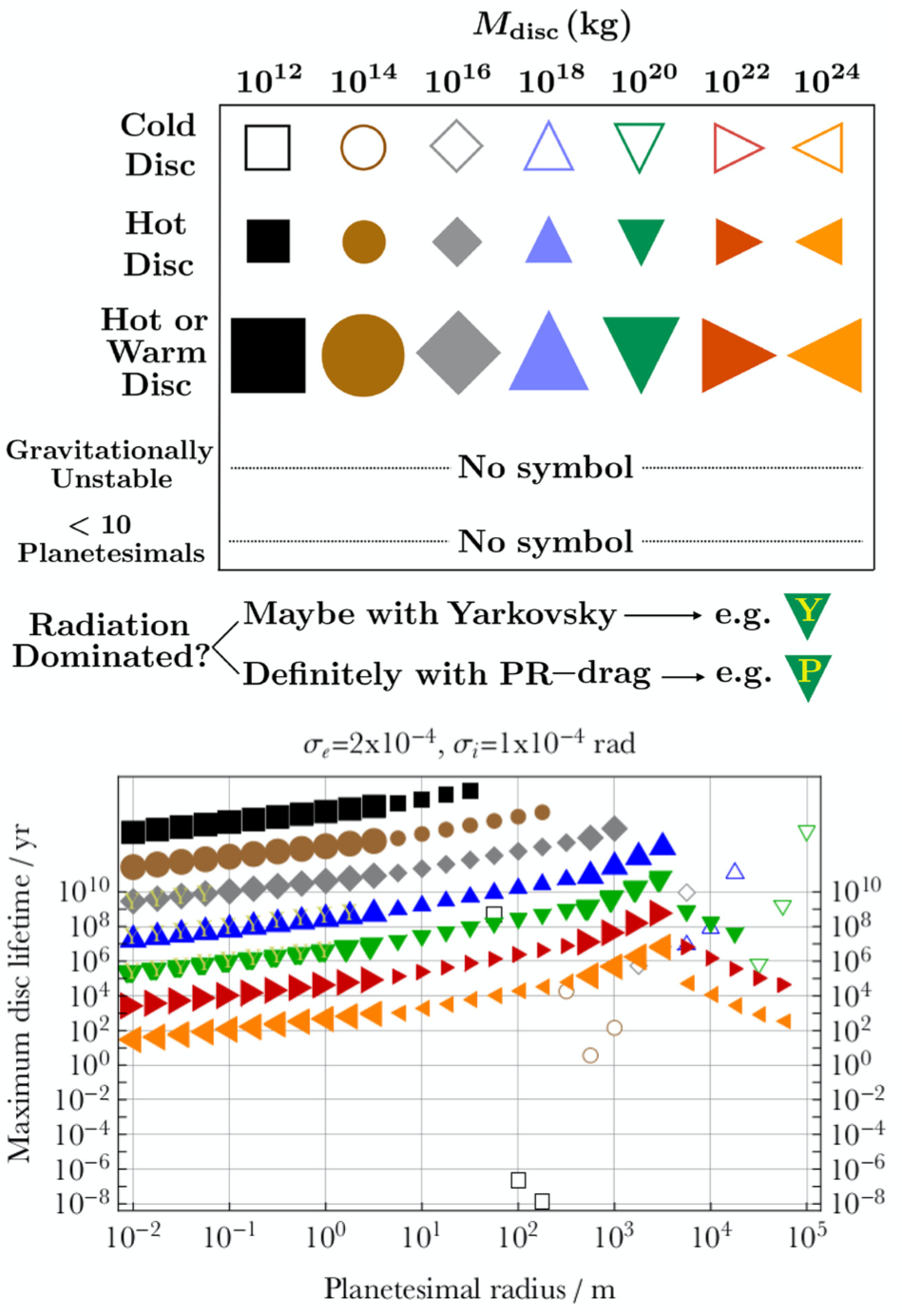
The lifetime of a planetary disc that orbits a white dwarf represents a crucial input parameter into evolutionary models of that system. Here we apply a purely analytical formalism to estimate lifetimes of the debris phase of these discs, before they are ground down into dust or are subject to sublimation from the white dwarf. We compute maximum lifetimes for three different types of white dwarf discs, formed from (I) radiative YORP break-up of exo-asteroids along the giant branch phases at 2-100 au, (II) radiation-less spin-up disruption of these minor planets at R⊙, and (III) tidal disruption of minor or major planets within about R⊙. We display these maximum lifetimes as a function of disc mass and extent, constituent planetesimal properties, and representative orbital excitations of eccentricity and inclination. We find that YORP discs with masses of up to 1024 kg live long enough to provide a reservoir of surviving cm-sized pebbles and m- to km-sized boulders that can be perturbed intact to white dwarfs with cooling ages of up to 10 Gyr. Debris discs formed from the spin or tidal disruption of these minor planets or major planets can survive in a steady state for up to, respectively, 1 or 0.01 Myr, although most tidal discs would leave a steady state within about 1 yr. Our results illustrate that dust-less planetesimal transit detections are plausible, and would provide particularly robust evolutionary constraints. Our formalism can easily be adapted to individual systems and future discoveries.
Heavy metal fragment survives destruction from dead star
Chris Manser et al.
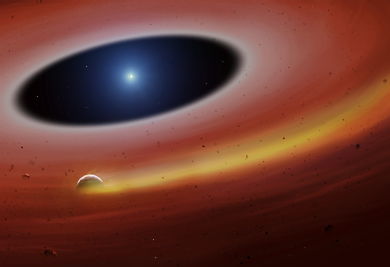 Many white dwarf stars show signs of having accreted smaller bodies, implying that they may host planetary systems. A small number of these systems contain gaseous debris discs, visible through emission lines. We report a stable 123.4-minute periodic variation in the strength and shape of the Ca II emission line profiles originating from the debris disc around the white dwarf SDSS J122859.93+104032.9. We interpret this short-period signal as the signature of a solid-body planetesimal held together by its internal strength.
Many white dwarf stars show signs of having accreted smaller bodies, implying that they may host planetary systems. A small number of these systems contain gaseous debris discs, visible through emission lines. We report a stable 123.4-minute periodic variation in the strength and shape of the Ca II emission line profiles originating from the debris disc around the white dwarf SDSS J122859.93+104032.9. We interpret this short-period signal as the signature of a solid-body planetesimal held together by its internal strength.
Rocking shadows in broken circumbinary discs
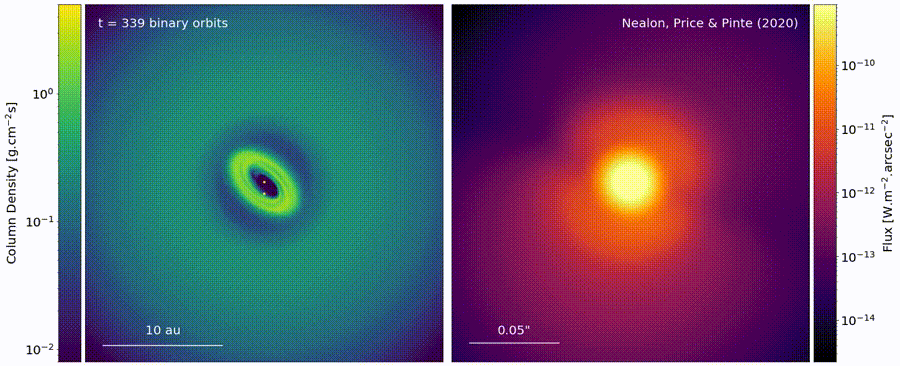
Rebecca Nealon, Daniel Price and Christophe Pinte
We use three dimensional simulations with coupled hydrodynamics and Monte Carlo radiative transfer to show that shadows cast by the inner disc in broken circumbinary discs move within a confined range of position angles on the outer disc. Over time, shadows appear to rock back and forth in azimuth as the inner disc precesses. The effect occurs because the inner disc precesses around a vector that is not the angular momentum vector of the outer disc. We relate our findings to recent observations of shadows in discs.
Constraining planet formation around 6-8 solar mass stars
Dimitri Veras, Pier-Emmanuel Tremblay, J. J. Hermes, Catriona McDonald, Grant Kennedy, Farzana Meru and Boris Gänsicke
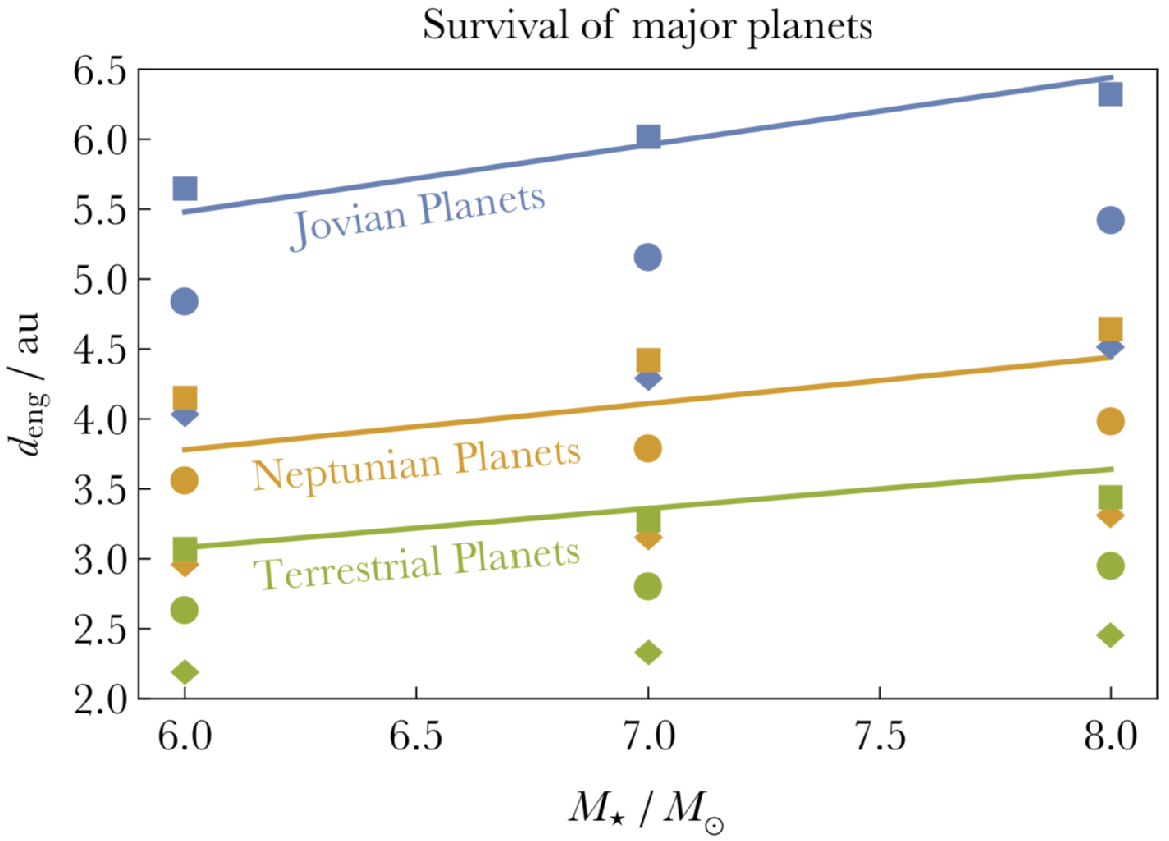
Identifying planets around O-type and B-type stars is inherently difficult; the most massive known planet host has a mass of only about 3 solar masses. However, planetary systems which survive the transformation of their host stars into white dwarfs can be detected via photospheric trace metals, circumstellar dusty and gaseous discs, and transits of planetary debris crossing our line of sight. These signatures offer the potential to explore the efficiency of planet formation for host stars with masses up to the core-collapse boundary at ≈ 8 solar masses, a mass regime rarely investigated in planet formation theory. Here, we establish limits on where both major and minor planets must reside around ≈ 6-8 solar masses stars in order to survive into the white dwarf phase.

